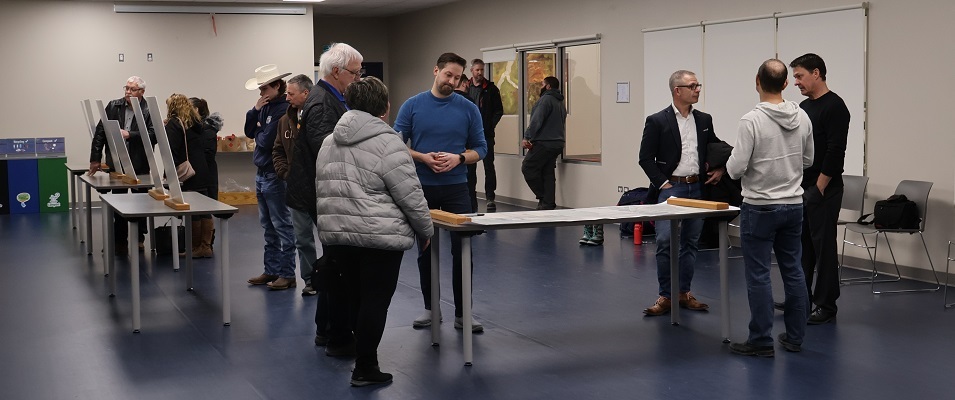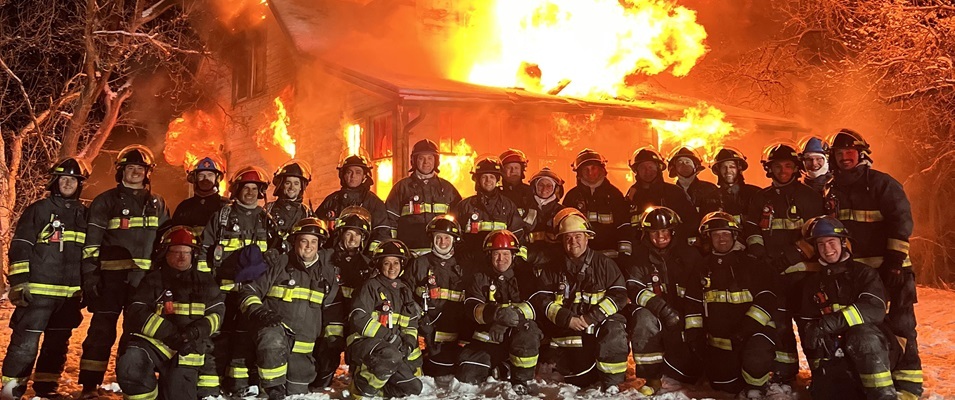
The Niverville Community Resource and Recreation Centre played host to an intermunicipal open house on Thursday, March 9.
Engineers were on hand from 4:00 p.m. to 7:00 p.m. to guide interested residents from four municipalities through a series of concept designs and detailed plans on a shared wastewater treatment plant to serve the region.
The $110 million project, currently in the preliminary design phase, is considered a forward-thinking wastewater solution which will help eliminate the need for future lagoons in Niverville and the RMs of Hanover, Ritchot, and Tache.
The project’s oversight committee, the Red Seine Rat Wastewater Cooperative (RSRWC), is comprised of members from each of these municipalities.
Barry Williamson and Stephen Godon are engineers with Jacobs, the firm commissioned to create the project design. They are a global firm with more than 60,000 employees worldwide. Water and wastewater solutions comprise much of their expertise.
The future, they say, is to move away from lagoons, which create a large ecological and environmental footprint.
“The province has come down with new regulations to address the [algae growth] happening in Lake Winnipeg,” Williamson says. “The new regulations are to control phosphorous, which is the nutrient in nitrogen. Lagoons can do that, but [only by] adding chemicals into the water. Mechanical treatment does it more efficiently.”
The RSRWC plant will be located immediately north of Niverville, near the location of the community’s current lagoon. Wastewater from 12 nearby communities plus some rural areas will be processed through this plant.
“It was a good point [to place the treatment plant] because of the elevations that are involved as it moves towards the river,” says Godon.
Nine lift stations will be built, one in almost every community being serviced. Some communities, like Grande Pointe and Île-des-Chênes, will share a lift station.
Approximately 90 kilometres of pipeline will transport the wastewater from its various locations to the plant. According to Williamson, much of it will be installed via directional drilling, which has a lower overall impact. It may be required to lay some open cut pipe in certain areas.
At this stage of research, he adds, the effluent pipelines will follow the road networks and only run through municipality right-of-ways. The firm is confident that no private land will be affected.
A final pipeline will run west from the plant all the way to the Red River, where it will deposit a clean liquid byproduct produced by the plant.
“When we set the elevation of the plant, we will have the ability to empty the water coming out of the plant by gravity,” Williamson says. “We’re going to have pumps as a backup so we can pump the water in [case of] a flood situation.”
The mechanical plant will use mostly biological means to treat the wastewater coming in. This will be done through the introduction of air, ultraviolet light, and natural organisms, or friendly bacteria, which help remove harmful nutrients.
“The reason why the RSRWC is going to that is because they need to address the more stringent regulatory requirements,” Williamson says. “Down the road, there might be even more regulations in place.”
Methane and other greenhouses gases aren’t necessarily reduced through this process, he adds, but they are certainly more controlled.
This kind of wastewater treatment creates a number of byproducts. One is a collection of large and small particulate which has been filtered out and needs to be hauled to the landfill on occasion. It comprises only a small part of the total product in the end.
“People flush everything down the toilet,” Williamson says. “Anything that can be flushed [ends up here] and you have to take it out. You don’t want that stuff floating down the river.”
Another product is the sludge that settles out of the liquid as it sits in tanks. This sludge is thickened, bringing it to a solider state, and has usefulness as fertilizer.
“There’s processes out there that turn it into a prill, like the little fertilizer beads you buy at Home Depot,” says Williamson. “The [RSRWC] may decide to go down that road. It’s an advanced treatment but it can also be turned into class-A biosolids which can then be land applied.”
The final product is the treated liquid that is sent off to the river once it meets provincial standards. Some chemical may be needed on occasion, but according to Williamson it requires a small fraction of what is used in a typical lagoon.
One of the plant design options that the RSRWC will need to choose from uses an additional step which includes membranes which the wastewater must pass through. This system is effective to the point where the liquid byproduct headed for the river is virtually potable.
Next steps for the team at Jacobs include gathering feedback from the RSRWC in order to create the final project design. If all goes as planned, they anticipate it being ready for operation by 2028.
Funding for this project is coming from three levels of government. A total of $39 million in grant monies has been promised by the federal and provincial governments. The municipal collaborative will bear the balance of $71 million.
“It’s a fantastic project for the communities,” Williamson concludes. “This is the first regional treatment plant in Manitoba and I think it’s going to set the stage for others. [It’s great] to see how a collaborative approach with other municipalities makes things come together.”


















